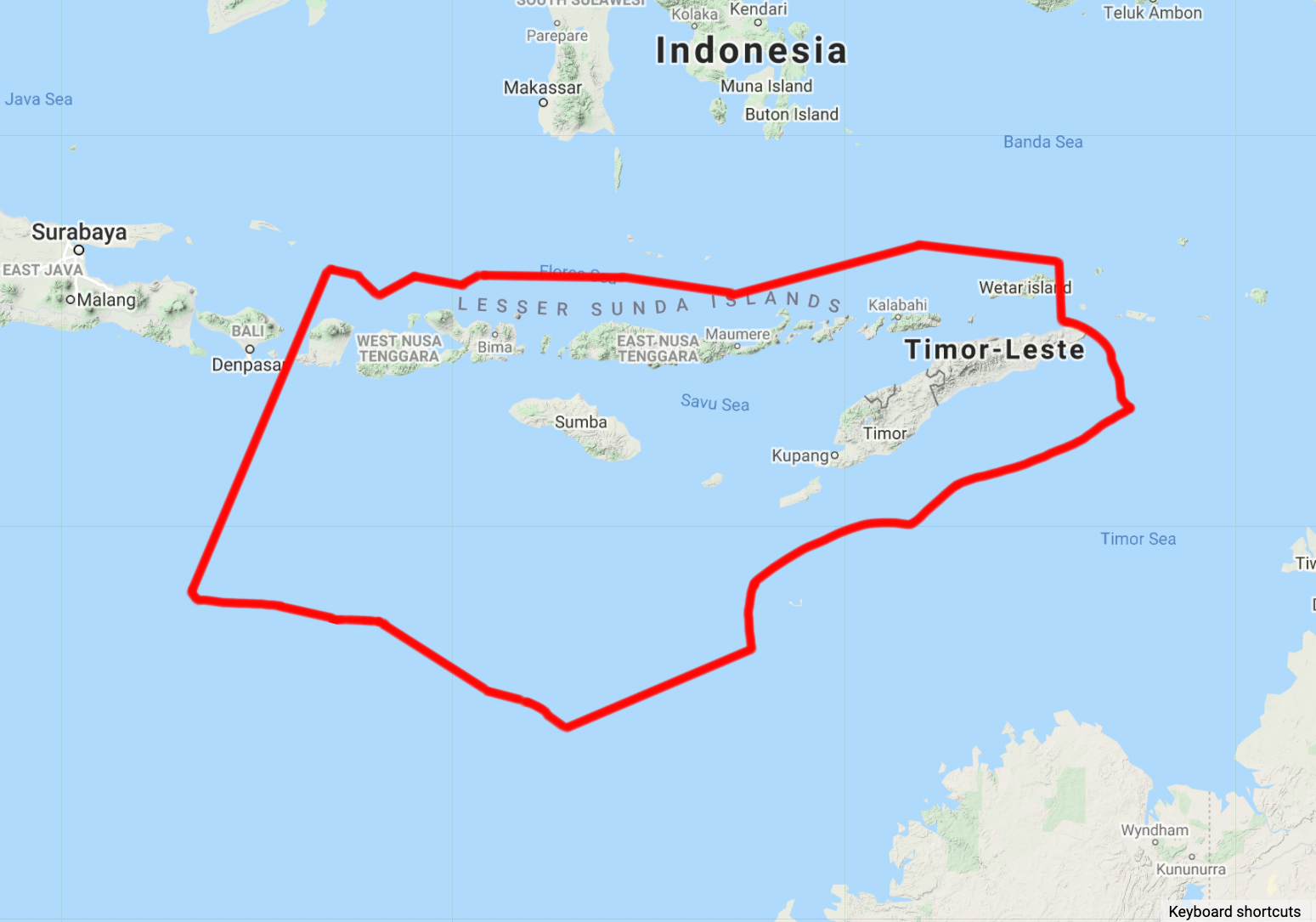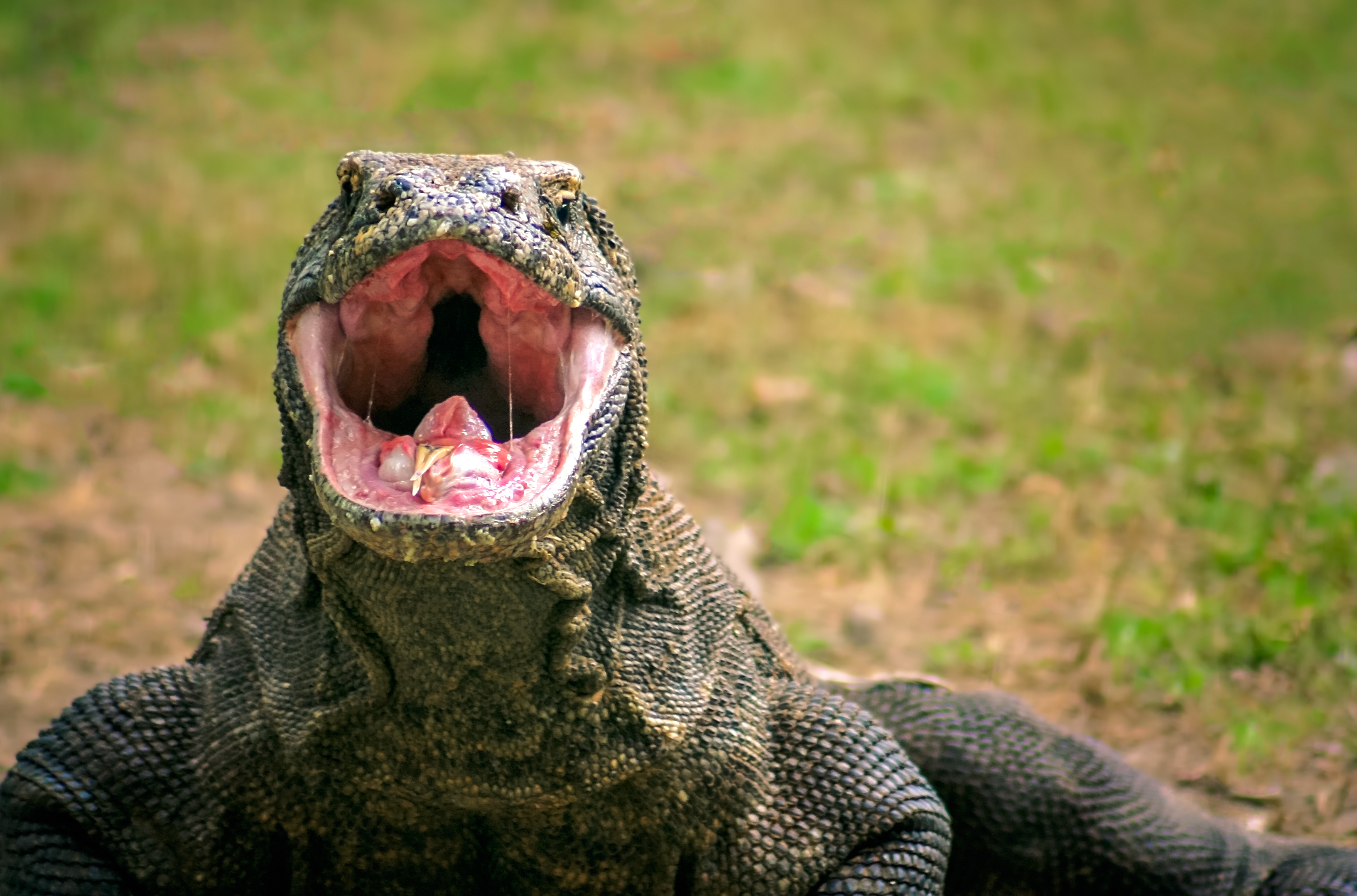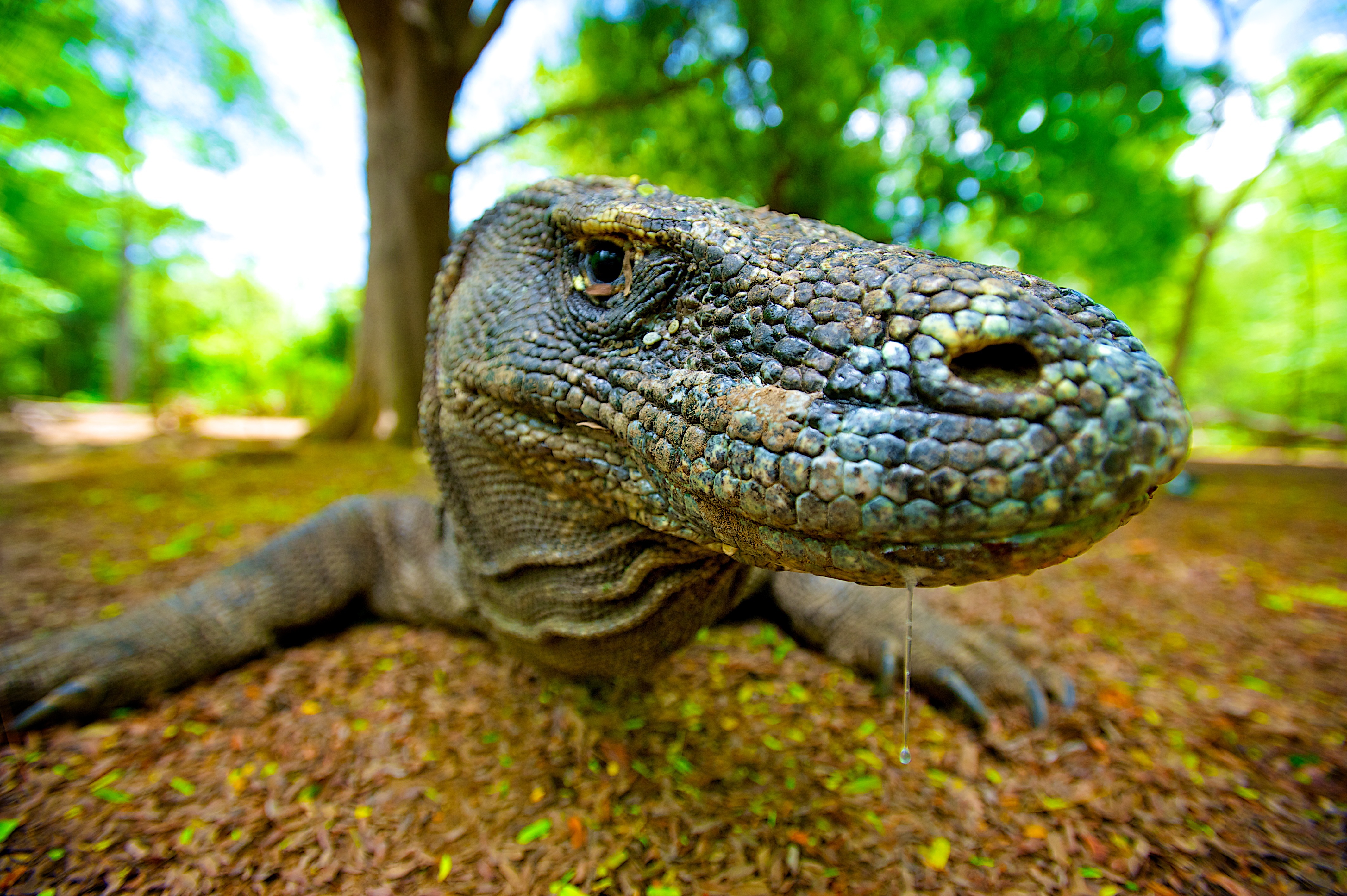Komodo dragons: how one of the rarest, largest lizards thrive
- Nature Conservation
- Land Conservation
- Iconic Species
- Wildlife
- Reptiles
- Australasian Islands & Eastern Indonesia
- Australasia Realm
One Earth’s “Species of the Week” series highlights an iconic species that represents the unique biogeography of each of the 185 bioregions of the Earth.
From medieval Europe to ancient China, the dragon is one of the most prevalent myths across the world. However, for the Indigenous people of the Indonesian islands of Komodo, Rinca, Flores, and Gili Motang, the buaya darat, or “land crocodile,” is a reality.
Growing up to three meters (10 ft) in length and weighing 136 kilograms (300 lb), Komodo dragons are the largest lizards on Earth. In 1926 they were coined the “Prehistoric Monster” after William Douglas Burden led a highly publicized expedition to Komodo island. Their massive size and the adventure to find them inspired one of the most famous movies of all time, King Kong (1933).

The Komodo dragon is the iconic species of the Southeast Indonesian Dry Forest Islands (AU15) bioregion.
A fierce bite and appetite
Until the last century, with minimum human contact, Komodo dragons thrived on the islands at the top of the food chain for millions of years. Although they don't breathe fire like the dragons of lore, a single bite can be deadly.
It was previously thought that Komodo dragons’ mouths were so filled with bacteria that it ultimately led to the death of their prey. In 2009, that was dispelled with the discovery of venom glands.
These toxins lower blood pressure, prevent clotting, and induce shock as the dragons bite down with their serrated teeth and pull with their powerful neck muscles. Whether deer, pigs, or water buffalo, Komodo dragons camouflage themselves and ambush their prey.
They can sprint as fast as 19 kilometers per hour (12 mph), walk up to 11 meters (7 mi) a day, and dive 4.6 meters (15 ft) deep, all to catch a meal. A dragon can eat a whopping 80% of its body weight in a single feeding.

Mating with or without males
Komodo dragons mate once a year between May and August. Females release a scent in their feces, and the males follow the trail. When located, the male will use their sharp claws, typically used for shredding meat, to scratch her back and then lick her gently. A lick back means she consents to mate.
Often, two males will have to wrestle one another for the female, biting into each other's necks and whipping their large, muscular tails at one another. Eggs are laid in September, about thirty to one female, and they are buried underground for eight months.
If a female cannot find a male, she fertilizes her own eggs in a process known as parthenogenesis. This occurs because female Komodo dragons are born with both male and female chromosomes. Although beneficial to replenish their population, this type of reproduction only results in male offspring and can lead to inbreeding.

Keeping Komodo dragons safe
As humans have further inhabited the islands, more and more forests and bush have been burned to clear the area. This, along with poaching, has caused the Komodo dragons to rise to the level of Vulnerable in conservation status.
In 1980, Indonesia established a 700-square-mile Komodo National Park to protect the species and its habitat, and now it is a UNESCO World Heritage site. Conservation is key to keeping the Komodo dragon a creature of reality and not a mere myth.
Explore Earth's Bioregions-CC-Charles%20J%20Sharp-2015.jpg?auto=compress%2Cformat&w=1440)


